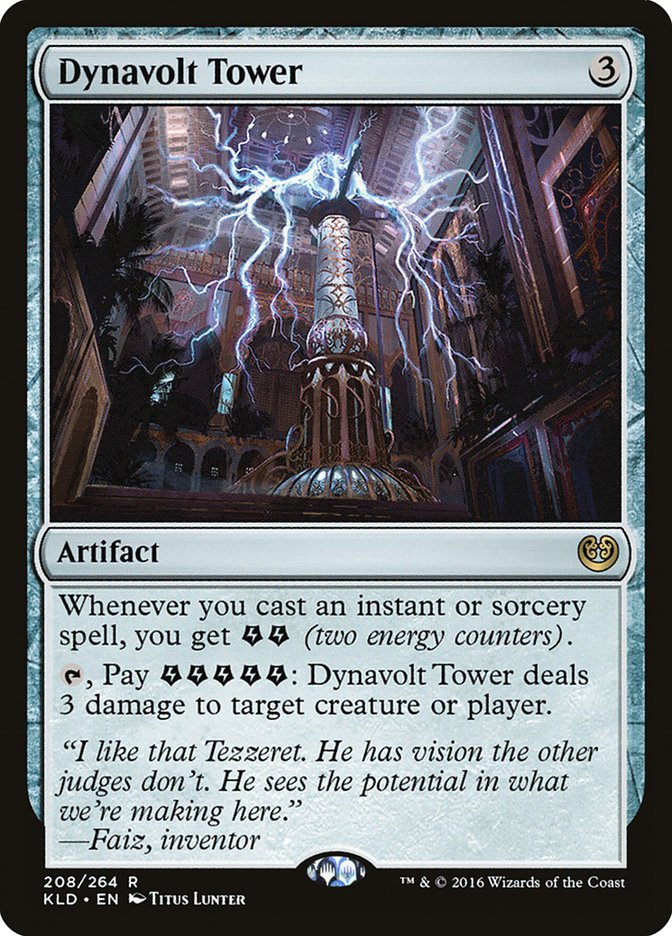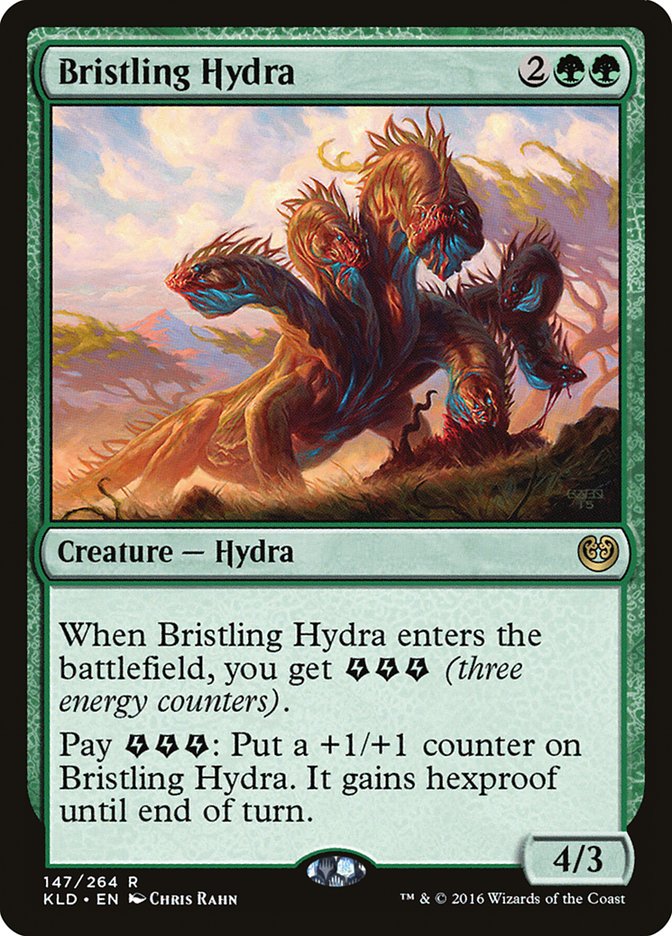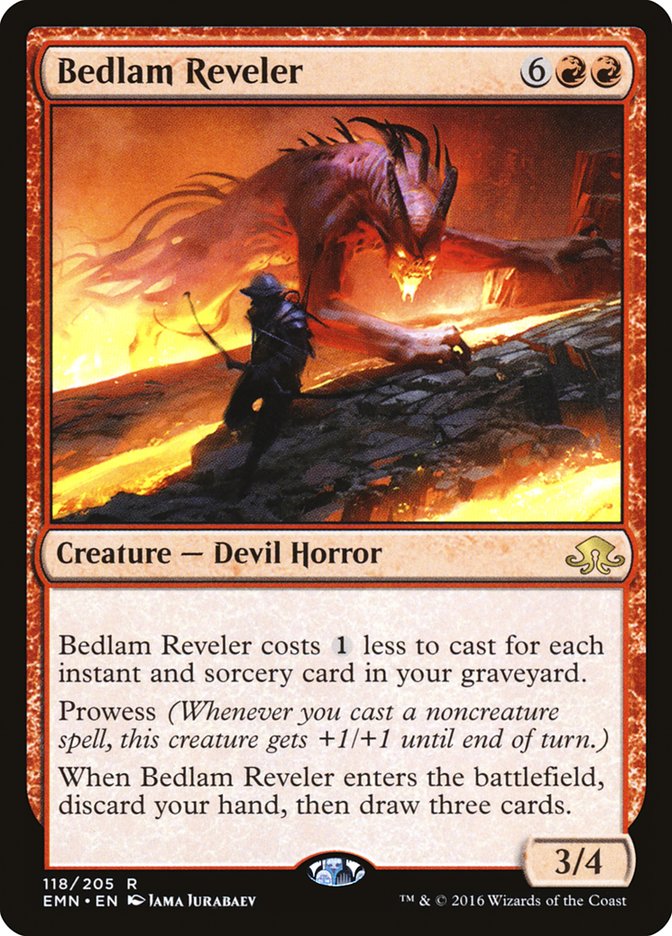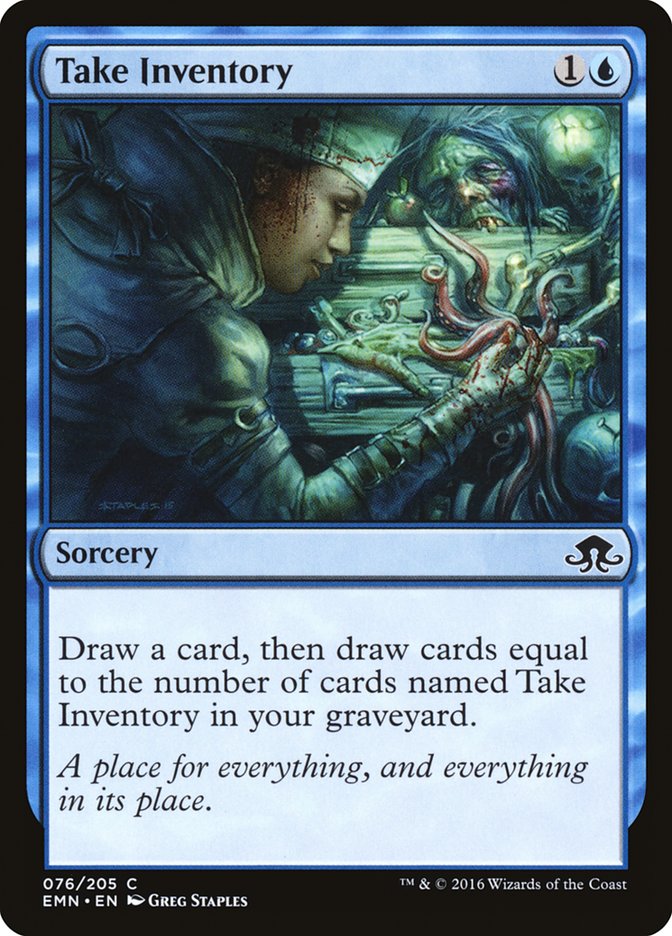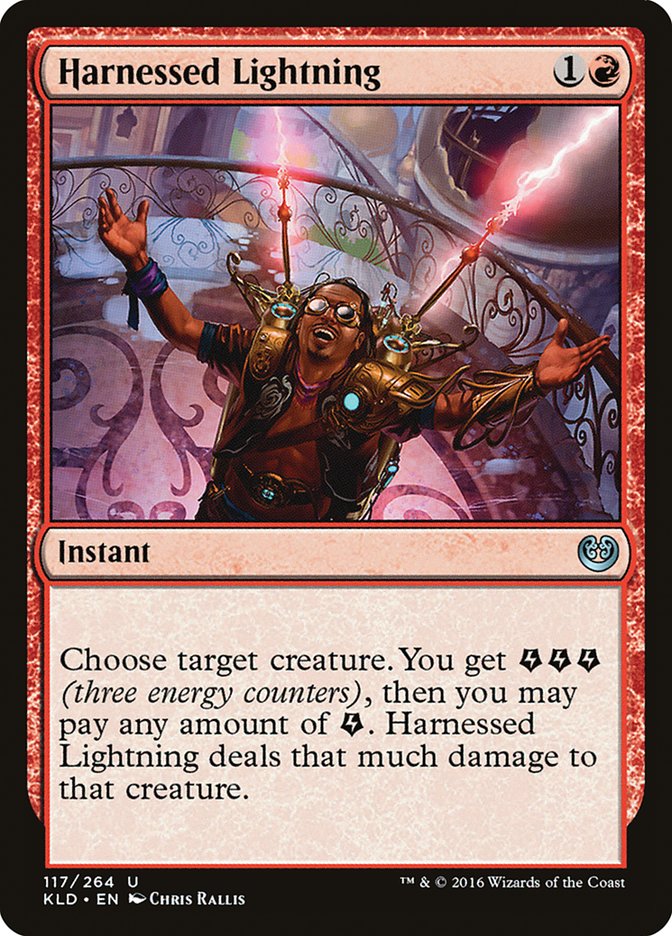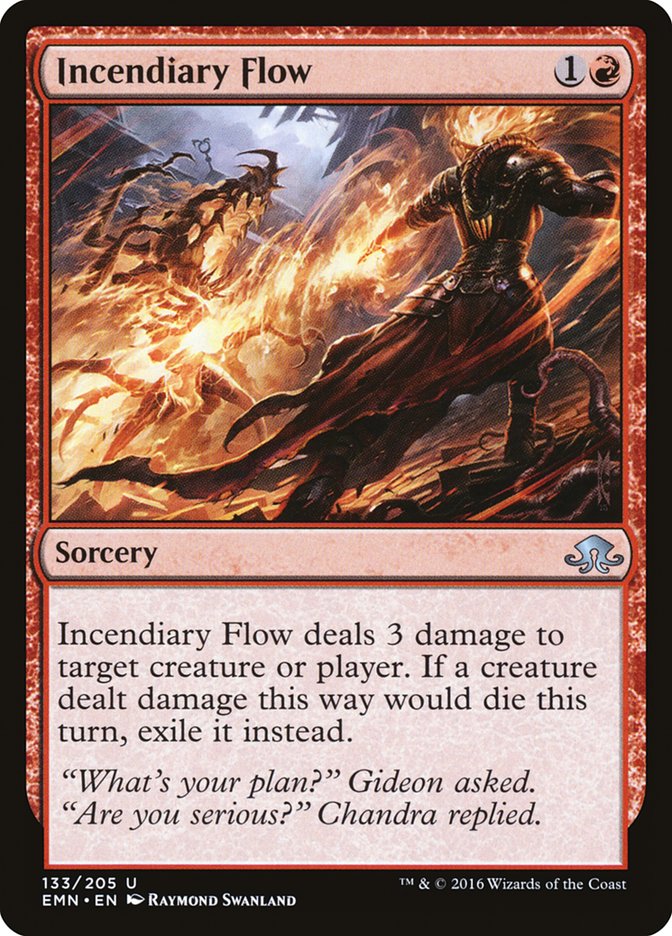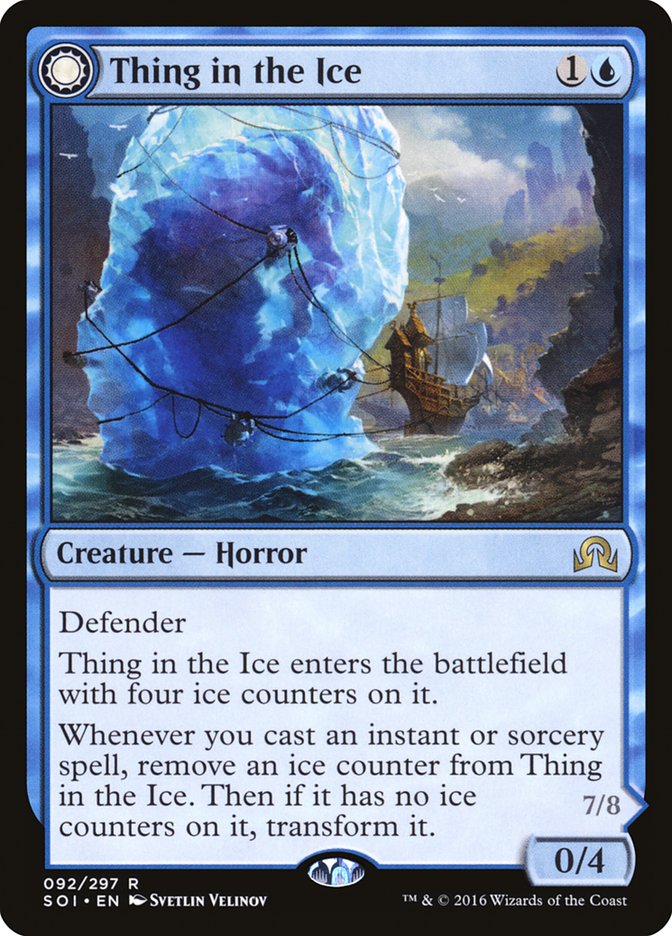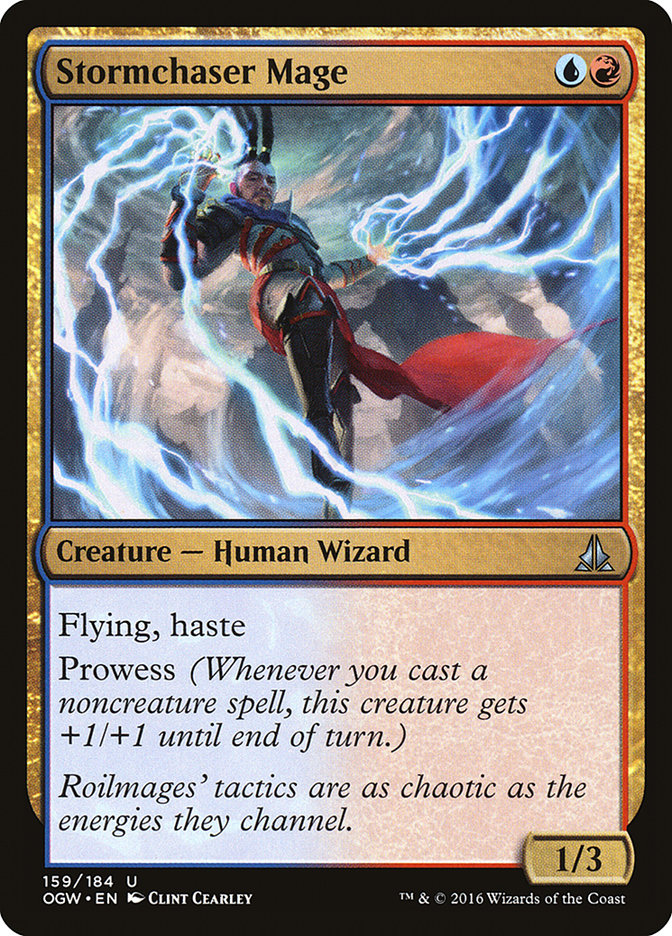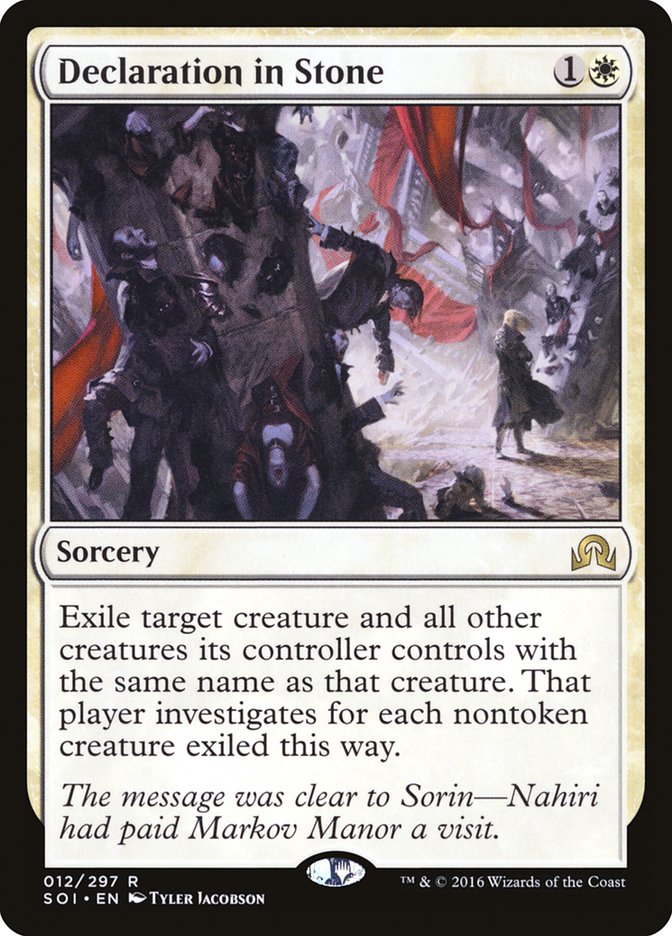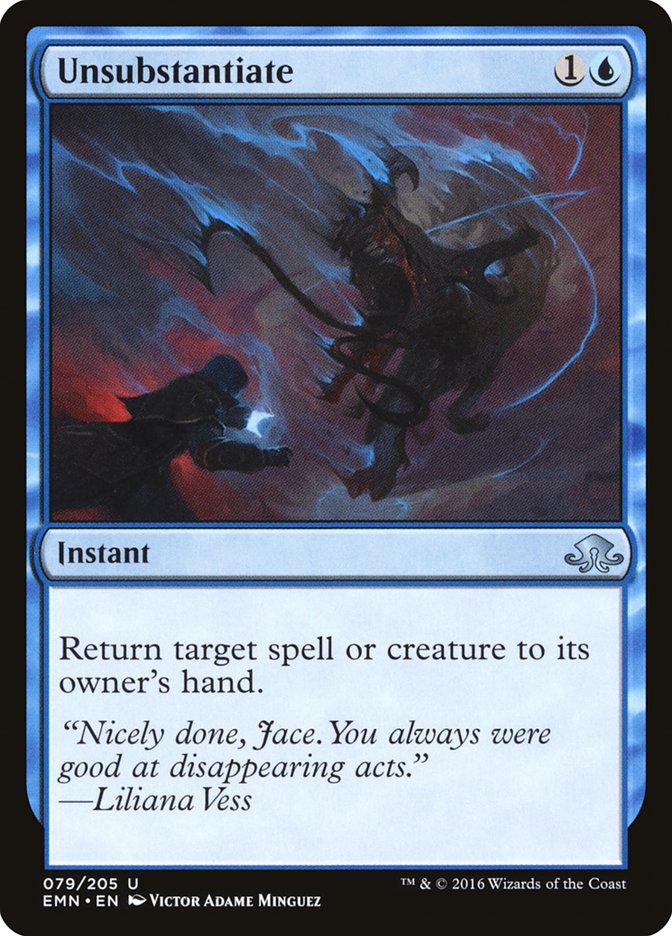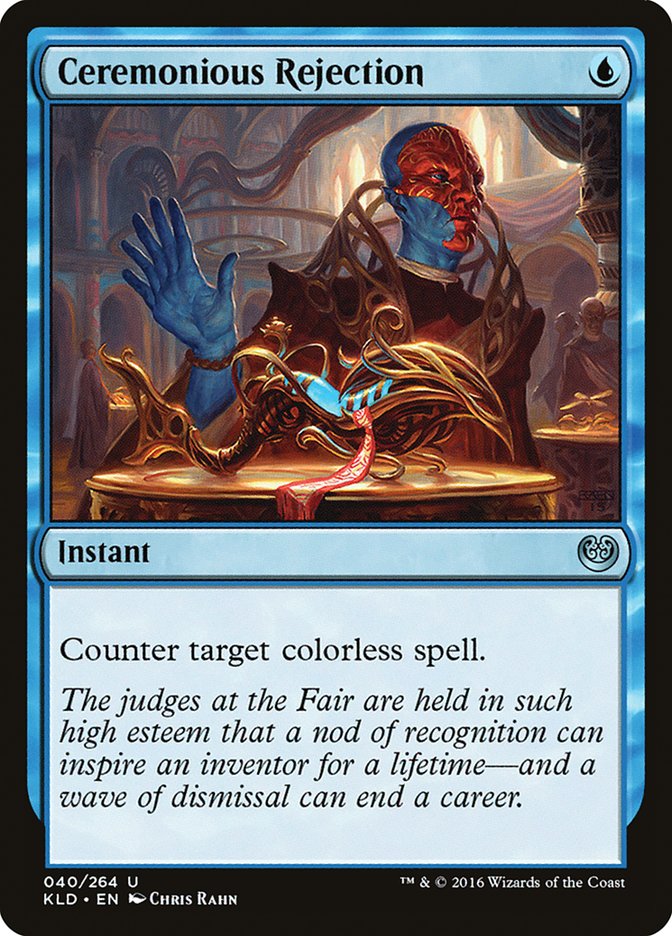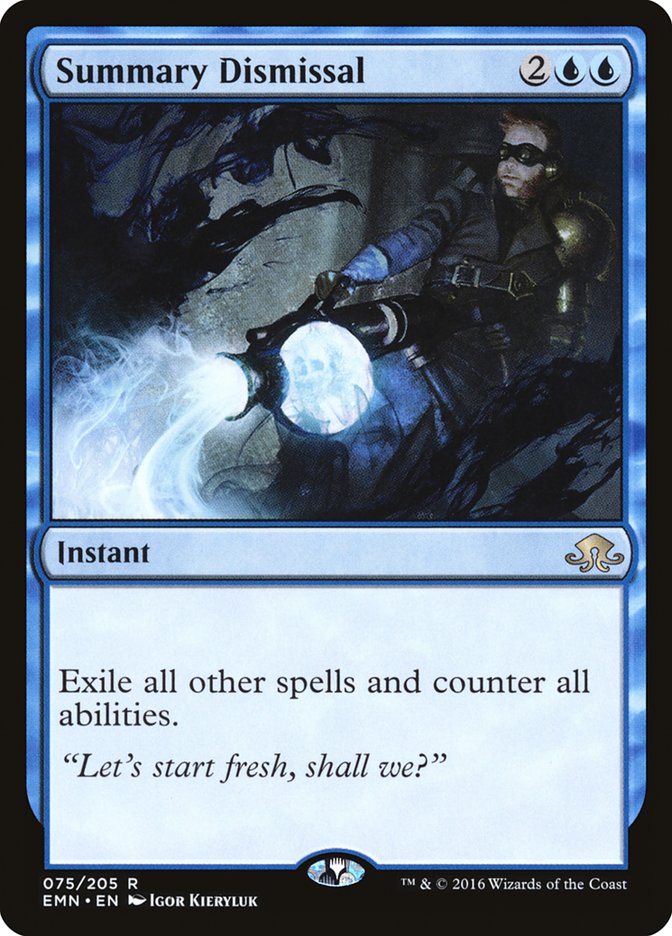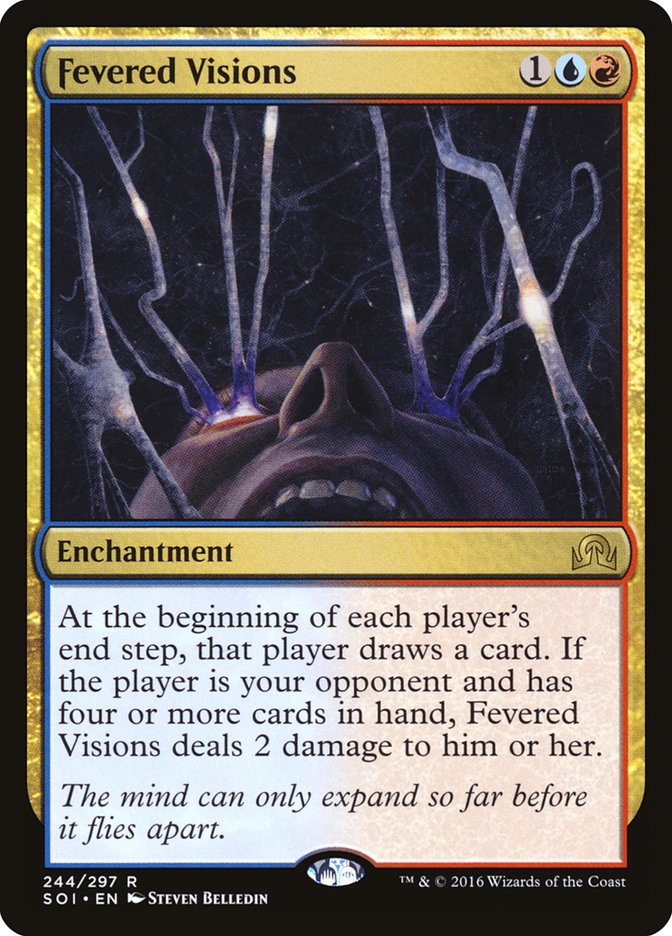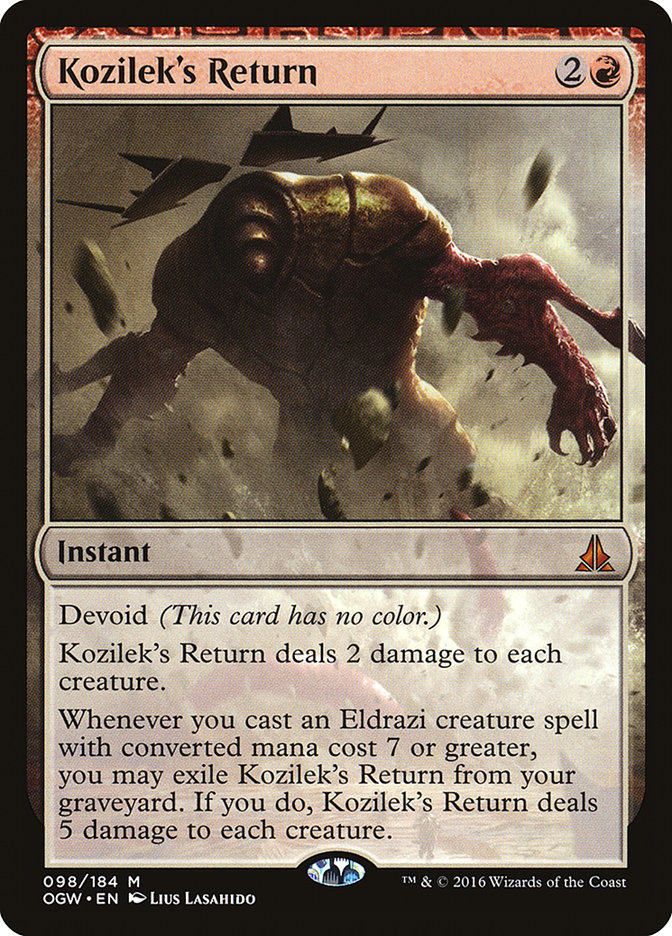The big show is here.
With #PTKLD starting tomorrow, all eyes are on Standard and what the pros will bring to the table. Today I’m going to go over a color combination I’ve been writing about for months now, but with a bit of a twist. I suppose it is no wonder I’d be drawn to a U/R deck featuring a powerful artifact that generated virtual/actual card advantage, but here we are.
This is the most underrated card in Kaladesh, hands down. The stuff I’ve been able to do with Dynavolt Tower has surprised even me. After seeing Gerry’s build from last week, I heard the call. The siren song. Once again I’m going into battle with a U/R deck, and I’m going to give you everything I know about it before SCG Regionals and the Pro Tour this weekend.
First off, Dynavolt Tower isn’t as strong as Pyromancer’s Goggles. It isn’t flashy, won’t let you draw a ton of extra cards, and won’t usually win the game by itself. However, the significant discount is real, and the virtual card advantage you gain by killing creatures or dealing damage to the opponent is solid. Plus, the Tower works well in multiples, which means we can play three or four copies without much fuss.
The next thing you need to know about Dynavolt Tower, and this deck in general, is that it matches up well against creature-based decks but tends to falter against oddball strategies. We don’t have a fast clock, and our deck is full of cheap removal, which means we’re going to have a lot of dead draws against decks without many creatures. But, as Gerry pointed out last week, having too much removal doesn’t really feel like a downside at the moment. With W/R Vehicles being one of the stronger decks in Standard, being able to kill creatures with impunity is important.
Creatures (21)
- 4 Thraben Inspector
- 4 Selfless Spirit
- 3 Depala, Pilot Exemplar
- 2 Pia Nalaar
- 4 Toolcraft Exemplar
- 4 Veteran Motorist
Lands (24)
Spells (15)

One weakness of the Dynavolt Tower deck is that most colors have some cards that are pretty tough to beat, especially in the first game. Aetherworks Marvel, for example, will usually be goldfishing against you, and there isn’t much you can do about it. We don’t want to play counterspells in the maindeck, and our clock isn’t fast enough to punish them for their slower draws. And that is exactly what Aetherworks Marvel decks are counting on.
G/R Energy Aggro decks also present you with another problem:
Their ability to generate an absurd amount of Energy in the early turns means you will almost never be able to kill Bristling Hydra, so long as they play it smart. Luckily, the G/R Energy Aggro deck isn’t too popular, and you can usually beat any draw that doesn’t feature Bristling Hydra. But, that doesn’t mean the matchup is necessarily “good.” When one card singlehandedly defeats your strategy, you can’t just ignore it.
I’m not really sure what to do about this one. Other than using a counterspell of some sort, Bristling Hydra is going to beat you.
All right, all right. I’m sure you’re chomping at the bit for the list. After all, I keep talking about all the stuff the deck can do and you have no context. So here ya go.
Creatures (7)
Lands (23)
Spells (30)
- 4 Fiery Temper
- 2 Lightning Axe
- 2 Tormenting Voice
- 2 Unsubstantiate
- 4 Galvanic Bombardment
- 4 Take Inventory
- 4 Harnessed Lightning
- 4 Dynavolt Tower
- 4 Cathartic Reunion
Sideboard

Now, I’m sure you’ve all heard this song and dance before, so feel free to sing along with the chorus. There’s nothing I like more in Standard than pitching Fiery Temper to a Tormenting Voice, and Cathartic Reunion gives the strategy even more of a kick while doing it. Of course, having three cards in your hand in the late-game might be tough, but it isn’t nearly as difficult as you might think. With Bedlam Reveler and Take Inventory refueling your hand constantly, you get to filter away excess lands and find more ways to interact with your opponent.
In a lot of ways, this deck reminds me of a Modern deck. We’re doing some messed-up stuff, playing a lot of “do-nothing” cycling effects that build us toward one major goal. We’re spinning our wheels a lot, but we’re pushing toward Bedlam Reveler, Thing in the Ice, and Dynavolt Tower while doing so. And that’s the real trick: building towards something. If you don’t find Dynavolt Tower or Thing in the Ice early on, your draw might feel mediocre. Sure, you’re killing creatures and drawing some cards, but what are you actually doing?
That, to me, is why the deck wants four copies of both Dynavolt Tower and Thing in the Ice. All of your draws that start with either of those cards will feel a lot better than without, mostly because your opponent is then forced to deal with that card. Compared to something like Stormchaser Mage or Thermo-Alchemist, we’re not in the business of burning our opponent out of the game. We are trying to push inevitability. Chip damage is fine when your entire goal is built around it and the format actually gives you breathing room, but with W/R Vehicles being one of the dominant decks (and Smuggler’s Copter running rampant), you need to be more reactive. Also, you need your spells to be able to kill Smuggler’s Copter in the early turns.
The big move here is a focus on Harnessed Lightning as opposed to Incendiary Flow. While Incendiary Flow eliminates troublesome threats like Scrapheap Scrounger, Haunted Dead, and Prized Amalgam for good, it is a sorcery. Being sorcery-speed in a world full of Vehicles is a dangerous game to play. It makes me a little sad that Incendiary Flow is significantly worse than it was just a month ago, but the fact remains that you need to be able to interact with Smuggler’s Copter. If you aren’t able to interact with Smuggler’s Copter, then clearly you should just be playing Smuggler’s Copter.
The big draw for Dynavolt Tower is how easily it can overwhelm an opponent playing a basic aggressive plan. The turn you spend to cast it can be dangerous, for sure, but once you get the engine going, it becomes almost impossible to lose. All of your cheap burn spells can double up with Dynavolt Tower to kill bigger threats, or you can use it like a machine gun for smaller creatures. When you’re playing two or three instants or sorceries per turn, gaining the necessary Energy required to power Dynavolt Tower isn’t very difficult. I was actually surprised at how easy it was to power Dynavolt Tower when I first started playing with it, but I’ve since come to realize that it seamlessly works alongside the rest of your deck, much like Thing in the Ice or Bedlam Reveler. You’re just rewarded for building your deck in a certain way.
Take Inventory was the card that surprised me the most when first playing with the deck. You don’t need a lot of trickery to make it good; you just have to understand that the first one is expendable. When you’re cycling through your deck with Cathartic Reunion and Tormenting Voice, or just discarding the first one to Lightning Axe, pitching Take Inventory is nothing. Not only are you fueling your Bedlam Reveler by filling your graveyard with instants and sorceries, but any Take Inventory you draw after the first is straight busted. There are times where you’ll want to cast the first one you draw, since triggering Thing in the Ice and Dynavolt Tower is a big deal, but for the most part you just want to discard the first one in some way or another.
Just don’t be blinded by always discarding it. If your hand is heavy on lands or you think you’ll need to charge up Dynavolt Tower or Thing in the Ice, holding the first one for a little while is more than fine. It’s almost like a split card, giving you a big advantage by discarding it and finding another copy or using it as a normal cycling spell. In previous versions of U/R, I’ve talked about how unexcited I was to cast Take Inventory, but that was before Cathartic Reunion was printed. The fact that you get to play more than four copies of Tormenting Voice variants means stuff like Galvanic Bombardment and Take Inventory gets significantly better, and the burst of digging you get with Cathartic Reunion means you’ll be able to find additional copies of either more quickly.
Take Inventory wouldn’t normally be worth the investment, but since you can discard the first one in a number of ways without much of a drawback, it ends up being a big source of card advantage. And, the more copies you cast during the game, the easier it is to find the third and fourth, which will usually bury your opponent in removal. Since your deck is so heavy on removal, that means you’re trying to play this one-for-one game, killing every creature they cast. Without Bedlam Reveler, Take Inventory, or Dynavolt Tower, this strategy wouldn’t be very effective. After all, there is no such thing as a “bad threat;” there are only bad answers to those threats. Some of your removal won’t kill Verdurous Gearhulk or other large creatures, but being able to rebuild after using two or three spells to kill it is important.
We could be playing Thermo-Alchemist or Stormchaser Mage instead of Thing in the Ice, but that would require tilting our burn spells towards hitting players instead of creatures. As mentioned before, if we’re not killing Smuggler’s Copter, then we should likely be playing Smuggler’s Copter. I haven’t played against too many decks where my removal spells were dead draws just yet, and until that happens, I think this version of U/R is the best.
Thing in the Ice complements the draw spells and removal spells in this deck better than any other two-mana creature you could play. Some creatures, like Verdurous Gearhulk or Bristling Hydra, are too difficult to kill, but if you have a Thing in the Ice on the battlefield already, it shouldn’t be tough to bounce all of their creatures and start putting major pressure on them. And that one big turn of bouncing their battlefield full of creatures should be more than enough to swing the game in your favor. Seven damage is a lot, and it shouldn’t be hard to deal the rest with Dynavolt Tower, Fiery Temper, or attacking with Wandering Fumarole.
While Thing in the Ice has been disappointing in the past, that was in major part due to the presence of Reflector Mage in the format. As of now, Reflector Mage is on a serious downswing in popularity, meaning Thing in the Ice has a much higher stock than normal. Of course, if that changes once again and people start leaning on Reflector Mage in their creature decks, Thing in the Ice will be much worse.
Stuff like Declaration in Stone isn’t backbreaking by any means, since they’re spending a card and time to deal with your Thing in the Ice and giving you a Clue in the process. That Clue is occasionally more valuable than Thing in the Ice itself, since you’re able to dig for more card draw and more answers. And if you’re low on gas and not flipping Thing in the Ice anytime soon, that extra card could find a Harnessed Lightning or Fiery Temper to stop their Smuggler’s Copter or other flying creatures that Thing in the Ice couldn’t normally block.
I’ve tried versions with Thing in the Ice. I’ve tried versions with Thermo-Alchemist and Stormchaser Mage. I would rate Thing in the Ice much higher in terms of power level and functionality within the confines of this deck. Once you’ve cleaned up your opponent’s side of the battlefield, you can win the game a number of ways. Thing in the Ice is the only one of those two-drop creatures that can actually save you if you’re in a losing position. In fact, I’ve actually had turns where I could cast and flip Thing in the Ice in one fell swoop. It isn’t easy, or pretty, but it can save you in spots where you have no business winning, and that sure is nice for a creature that only costs you a two-mana investment.
This is actually a newer addition to the deck, and one I haven’t had much experience with, but I’ve had good experiences with this card in the past. There are some creatures (and spells on the stack) that you might have trouble dealing with. While it is technically card disadvantage, we’ve already established that it isn’t a big deal to lose cards when buying yourself time. We have so many ways of recouping card advantage that losing one here or there doesn’t really matter. While Take Inventory and Bedlam Reveler aren’t exactly Sphinx’s Revelation, I think of them in the same ballpark. You don’t mind spending three cards to deal with two creatures when you’re going to cast a spell in a few turns that gains all of that lost value back.
And while Unsubstantiate won’t kill a creature or counter a spell, it will trigger Thing in the Ice and Dynavolt Tower and fuel Bedlam Reveler. It also deals with some stuff you wouldn’t normally be able to handle. Flipping Westvale Abbey into Ormendahl, Profane Prince would normally be a death sentence for the deck, but having two cards you can draw into to save you is important. We have so many ways to churn through our deck looking for an answer that it only makes sense to give yourself one or two ways to deal with just about anything.
But Unsubstantiate, while being an answer to problematic spells being cast or creatures you couldn’t normally kill, can do some other cool things in a deck like this. Saving your Thing in the Ice for a single turn could end up being the punch you need to win the game. And coupled with the other counterspells in the sideboard, it adds a card to the deck that functions well against aggro, control, and combo decks.
Of course, Unsubstantiate isn’t going to shine against W/R Vehicles or any deck spewing its entire hand onto the battlefield in the first few turns. But you can’t have every single spell in your deck tilted toward beating hyper-aggressive decks. We need ways to beat everyone, and I think Unsubstantiate helps bridge the gap, at least.
This card has impressed me in the last week. From Aetherworks Marvel to Elder Deep-Fiend to Metalwork Colossus, there are quite a few cards that you can counter that could be problematic for a removal-heavy deck. And the real draw here: only costing one mana. You can hold up one mana almost every turn and it won’t affect you much. While we’re a control deck, we also function like a tempo deck in some ways. We don’t want to hit every land drop, and we want to discard extra lands to Tormenting Voice and Cathartic Reunion.
These are tried and true answers to control and Emrakul, the Promised End. We aren’t fast enough to beat an early Emrakul, the Promised End, which means we need more answers to it.
So what’s the draw of Dynavolt Tower over Fevered Visions? Or do you want to play both? The short answer is yes, you want to play both. But, like most versions of U/R I’ve played in the past, Fevered Visions belongs in the sideboard. It gives you free wins against a lot of B/x control strategies, since you can usually sideboard out most of your creatures and just let them drown on all the removal spells stuck in their hand. But Fevered Visions can be a double-edged sword for your maindeck. Aggressive decks put a lot of pressure on you in the early turns of the game. You can’t afford to take a turn off to cast Fevered Visions because you need to be dealing with their threats or advancing your battlefield. Plus, they can usually overwhelm you with all the extra threats that Fevered Visions provides them.
While Fevered Visions has been the backbone of the U/R deck since the last Pro Tour, I found it gave me a lot of the same problems that it had in the previous Standard. You can’t afford to give your opponent a lot of free cards because you have to kill literally everything they cast. Many decks can utilize those extra cards better than you can and play fewer lands than you do, meaning they’ll draw a higher density of proactive cards. Combine that with the turn you lose casting Fevered Visions and it is easy to see why it shouldn’t be in the maindeck.
Not positive this card is better than Radiant Flames, but being an instant can be a big deal. Gerry really likes Radiant Flames, and I don’t blame him, as it can be a blowout when you use Aether Hub to deal three damage to all creatures. In this case, it’s mostly just a personal preference.
Regionals, the Pro Tour, and Beyond
The Pro Tour could be full of decks that obliterate Dynavolt Tower. Like most control decks, we have to adapt to what everyone else is playing. At the moment, most people are leaning aggressive with W/R Vehicles, and that means a card like Dynavolt Tower is going to shine. Even if they kill it, you’re still going to be fine. Your deck functions smoothly without it. It isn’t the backbone of the deck by any means. Plus, they have to find the answer to it, spend time casting it, and hope you didn’t already gain some value from activating it.
While Dynavolt Tower isn’t the only reason to play this deck, it is certainly doing work. And on top of that, the fact that they work well in multiples means you don’t mind drawing extra copies, which was a problem for Pyromancer’s Goggles.
Is Dynavolt Tower the best deck in Standard? That remains to be seen. But I’m happy doing what I always do: finding a deck I like and trying to make it the best it can be. Dynavolt Tower is a good start for a U/R shell, but I’m sure it could be improved. Hopefully someone at the Pro Tour figures out just how good the card is and gets to show it off. I’d love to see what other people think about the archetype.
And the funniest part? I don’t even know if the deck should be U/R. Like Pyromancer’s Goggles, I just want to be leaner, and blue provides cheap creatures that go along with the strategy. This time it might be necessary, if only due to the strength of Take Inventory in the deck. But there are plenty of other colors to pair with red on this one.
Do I think Dynavolt Tower is going to win the Pro Tour? Probably not. It isn’t exactly a known quantity, and people don’t like getting cute when so much is on the line. I expect a lot of teams to show up with Elder Deep-Fiend alongside Haunted Dead and Prized Amalgam. I expect a lot of field will choose the best aggressive deck they can find. Whether that means W/R Vehicles or R/B Artifact Aggro is unclear. Standard is full of powerful cards, both from Kaladesh and before. It will be tough for a synergy-driven engine card to make a huge impact. But a boy can dream.


